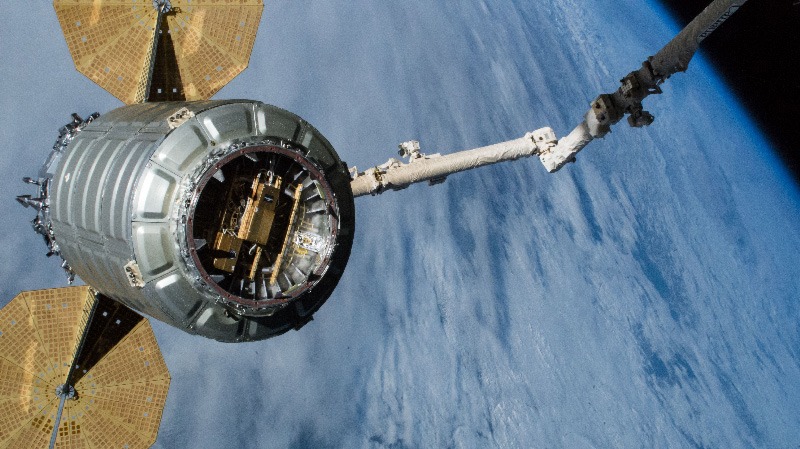SlingShot Tests Satellite Deployment and Payload Hosting Capabilities
Launching satellites is a growing business. A new platform that could bolster satellite deployment opportunities in space seeks to service this burgeoning economy. SlingShot, by the company SEOPS, is designed to deploy CubeSats at altitudes above the station using the infrastructure offered by the International Space Station in partnership with the U.S. National Laboratory and Northrop Grumman.
SlingShot arrived at the orbiting laboratory aboard the SpaceX CRS-16 mission in early December. During this flight, the company is testing every aspect of the technology’s potential uses while also deploying satellites for SEOPS’ clients. SlingShot was designed to launch on any cargo vehicle. For this mission it was transferred from the SpaceX vehicle to the Cygnus vehicle attached to the station and then loaded with satellites for deployment when Cygnus departs from the station.

After Cygnus leaves the station, the cargo craft will navigate to approximately 310 miles (500 kilometers) above the Earth, approximately 62 miles higher than the space station’s orbit. There, Slingshot deploys two satellites, expected to stay in orbit at least two years. In addition, a mounted payload will test SlingShot’s capability to host fixed payloads for an extended period, where the payload uses Cygnus’ power, attitude control and communication capabilities.
SlingShot’s approach to satellite deployment builds on previous efforts made by other companies and international partners. Most previous deployments from the space station were at lower altitude orbits that degrade within months, limiting the useful life of the satellites.
“That is a great orbit for test demos,” said Chad Brinkley, principal investigator for the facility, “but if you look at the market for where rockets are trying to go, 500 km is ideal for closing a business case for companies that are considering flying CubeSats to give them revenue from a satellite for two plus years.”
The satellites SlingShot accommodates are modular small satellites called CubeSatsthat come in different configurations. Brinkley noted, “Our system is so flexible, we can accommodate the different CubeSat formats – all of them!”
One surprise to the development team has been the level of interest in the payload hosting capability. Fixed mounted payloads do not require adding avionics and a bus, so the development cost is significantly lower than developing a satellite. Additionally, the payload “can use Cygnus’ power and data as well as point the payload,” said Brinkley.
SEOPS worked closely with NASA to develop and get approval for SlingShot in less than a year. The company contracted directly with Northrop Grumman for the nonrecurring engineering to integrate SlingShot with Cygnus and worked with the U.S. National Laboratory to receive their allocation, securing space for transportation as well as crew time for installation of the hardware. “For a commercial company, this is to me a great model for how you can do business with NASA and other commercial companies,” said Brinkley.
“We’re excited about having an opportunity to do this,” Brinkley said, “I feel like we’re executing the vision for commercialization of space.”